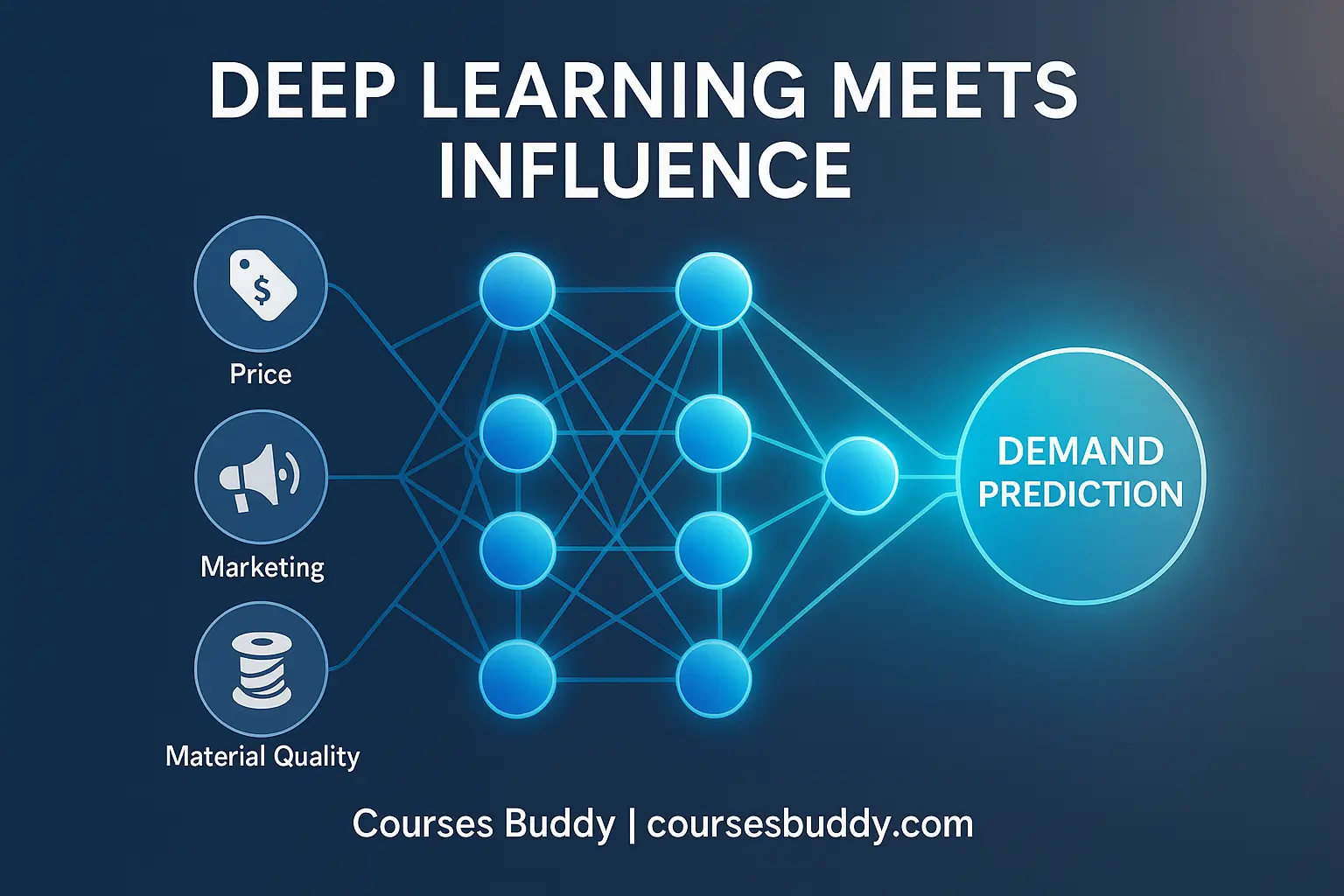Deep Learning Explained with Neural Networks – Courses Buddy

Deep Learning Explained with Neural Networks – Courses Buddy
Deep learning and neural networks are terms often used interchangeably in the world of artificial intelligence (AI). While both concepts are powerful tools in machine learning, they can also feel overly hyped or mysterious. In this guide, we’ll break down deep learning using a clear, relatable example—demand prediction for a t-shirt business—and help you understand what neural networks really are and how they work.
What Is Deep Learning?
At its core, deep learning involves using layered structures of artificial neurons (or "nodes") to model complex patterns in data. A neural network is simply a collection of these neurons connected together to process and interpret input data.
Let’s explore this idea step by step using a simple demand prediction task.
A Simple Neural Network: Price vs Demand
Imagine you run a website that sells t-shirts. You want to predict how many t-shirts you will sell based on their price. Naturally, the higher the price, the lower the demand. You can create a dataset that reflects this inverse relationship.
By plotting the data, you might fit a simple straight line showing that as price increases, demand decreases—until it flattens at zero (since demand can’t be negative).
That blue line you draw? That’s effectively a basic neural network with just one neuron:
Input (A): Price of the t-shirt
Output (B): Estimated demand
This single “neuron” processes the input price and outputs an estimated demand. In AI terminology, this is called an artificial neuron—and this simple function it performs is the foundation of all neural networks.
Building a Bigger Network: Multiple Factors in Demand
Now, let’s make things a bit more realistic.
Besides price, other factors affect demand:
-
Shipping cost
-
Marketing spend
-
Material quality (e.g. thick cotton vs cheap fabric)
A Realistic Example from Another Industry
Suppose you run a subscription-based meal delivery service. You want to predict customer sign-ups.
Relevant input factors might include:
-
Meal pricing
-
Delivery speed
-
Advertisement spend
-
Customer reviews and ratings
A more complex neural network might look like this:
-
Affordability Neuron: Combines meal price and delivery fee.
-
Awareness Neuron: Influenced by ad spend and social media presence.
-
Perceived Quality Neuron: Based on reviews, testimonials, and pricing.
-
Final Sign-Up Prediction Neuron: Aggregates all previous outputs.
Each of these neurons processes information and passes it forward to reach the final output—estimated customer sign-ups.
The Power of Neural Networks
What makes neural networks so remarkable is this:
➡️ You don’t need to manually define intermediate concepts like affordability or quality.
➡️ You simply provide the input data (A)—like price, reviews, ad spend—and the expected output (B)—like sign-ups or sales.
➡️ The neural network automatically learns what functions the intermediate neurons should perform to best predict the output.
As you increase the amount of data and make the network larger (with more neurons and layers), it becomes capable of learning extremely complex patterns and relationships between inputs and outputs.
Final Thoughts
A neural network is like a stack of simple Lego bricks—each artificial neuron performs a small computation, but when you combine enough of them, they can model surprisingly sophisticated relationships.
In our example, we saw how a neural network can help predict t-shirt demand. But in real-world applications, these networks are used for tasks like image recognition in security, voice assistants in customer support, financial forecasting, and much more.
With enough data and the right architecture, deep learning can power some of the most advanced and accurate systems in modern AI.